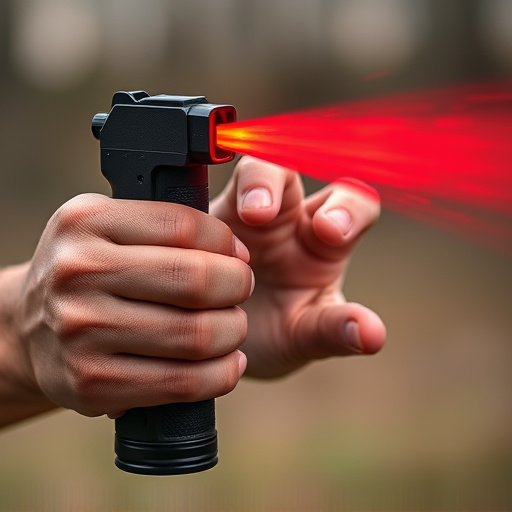Maintaining pepper spray's effectiveness requires storing it within the optimal best storage temperature range of 50°F to 80°F (10°C to 27°C). Extreme heat or cold can degrade the active ingredient, capsaicin. Protection from direct sunlight and heat sources, along with keeping it in a cool, dry place, prevents degradation, leakage, or evaporation, crucial for reliable self-defense. Always follow manufacturer guidelines and local laws for safe usage and storage.
Defensive spray has emerged as a powerful tool for civilian protection, offering a non-lethal means of deterring potential threats. This article delves into the world of pepper spray, exploring its composition and effectiveness. We’ll guide you through crucial factors to consider for optimal best storage temperature for pepper spray to ensure longevity and potency. Additionally, discover best practices for responsible use, providing tips on safety and legal compliance to empower civilians with effective self-defense strategies.
- Understanding Pepper Spray: Its Composition and Effectiveness
- Factors to Consider for Optimal Storage Temperature of Pepper Spray
- Best Practices for Civilian Defensive Spray Use: Tips for Safety and Legal Compliance
Understanding Pepper Spray: Its Composition and Effectiveness
Pepper spray, a popular civilian protection tool, is a potent substance designed to disable and deter potential threats. Its primary active ingredient is capsaicin, a compound derived from chili peppers that binds to pain receptors in the eyes, nose, and respiratory system, causing intense irritation and temporary incapacitation. The spray also contains other ingredients like water, propellants, and sometimes additives to enhance its effectiveness and ease of application.
When stored at the recommended best storage temperature for pepper spray (typically between 59°F to 86°F or 15°C to 30°C), its potency and reliability remain optimal. Extreme temperatures can degrade the capsaicin, affecting its effectiveness over time. Proper storage also ensures the spray’s physical integrity, preventing leakage or evaporation. It’s crucial for users to keep their pepper spray out of direct sunlight, in a cool, dry place, and away from heat sources to maintain its quality and ensure it’s ready when needed for self-defense purposes.
Factors to Consider for Optimal Storage Temperature of Pepper Spray
When it comes to storing pepper spray, understanding the ideal temperature range is paramount for maintaining its effectiveness and potency. The best storage temperature for pepper spray typically lies between 50°F and 70°F (10°C to 21°C). This temperature range ensures that the active ingredients in the spray remain stable and do not degrade over time.
Factors such as heat, direct sunlight, and extreme fluctuations can significantly impact the quality of pepper spray. Storing it in a cool, dry place, away from direct heat sources or cold drafts, is crucial to preserving its potency. Maintaining the recommended storage temperature helps ensure that when you need it most, your pepper spray will be ready for use, providing the necessary protection with each spray.
Best Practices for Civilian Defensive Spray Use: Tips for Safety and Legal Compliance
When it comes to civilian defensive spray, proper usage and storage are paramount for safety and legal compliance. For optimal performance, always store your pepper spray at the recommended best storage temperature—typically between 50°F and 80°F (10°C to 27°C). Extreme temperatures can compromise the integrity of the solution and reduce its effectiveness.
In terms of safety, it’s crucial to familiarize yourself with local laws regarding defensive spray use. Ensure that you only deploy the spray as a last resort when facing an imminent threat. Keep the canister out of reach of children and avoid aiming it at sensitive areas like eyes or the face unless absolutely necessary. Regularly inspect your spray for any signs of damage or leakage, and always follow manufacturer guidelines for proper handling and disposal.
Defensive spray is a powerful tool for civilians seeking protection, but proper storage is crucial for maintaining its effectiveness. The best storage temperature for pepper spray is typically between 50°F and 70°F (10°C to 21°C), ensuring optimal performance when needed. By understanding the composition of pepper spray, considering storage conditions, and following best practices for use, civilians can leverage this tool responsibly and legally, providing a layer of personal safety in various situations.
